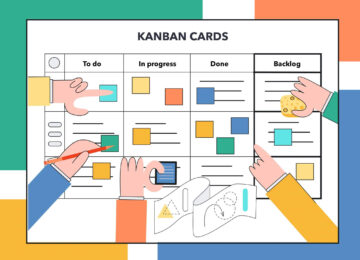When a creditor has obtained a court judgment against an employee, the creditor can garnish their wages. This is called income execution, which can be stressful for the employee.
The amount that can be garnished varies depending on the type of debt. For instance, for student loans, the maximum can be 15 percent of disposable earnings; for child support, a higher percentage can be withheld.
The Legal Requirements
Wage garnishment is a legal process where an employer must deduct a portion of an employee’s earnings and send it directly to the person or agency that owed money. The procedure is often initiated by a creditor or government agency that has gotten a judgment in a court case.
Depending on the types of payroll garnishment, different amounts of an employee’s wages may be withheld. If the employee is at least 12 weeks late on support payments, the amount can vary from 15 percent of their disposable income for student loans to 65 percent for child support.
When the employee receives a wage garnishment order, it must be processed according to specific rules and regulations. This requires employers to be familiar with the relevant laws and actively monitor legislation and changes in garnishment laws as they occur.
It’s a complex, multistep process that typically starts with the employer receiving an order to withhold and remit money. The amount of an employee’s disposable income that can be garnished is also limited by law. This sum is determined based on legally mandated deductions, such as federal, state, and municipal taxes, the individual’s portion of Social Security, Medicare, and unemployment insurance taxes, and legally mandated payments to state retirement systems.
Determine the Amount of Wage Garnishment
As an employer, you may be required to deduct a portion of your employee’s paycheck for certain debts, including child support, alimony, and back taxes. The amount of this deduction can be determined by following a few steps.
First, calculate your employee’s disposable earnings. This is the amount that remains after all legal deductions are made, such as taxes and Social Security. It excludes non-required deductions, such as health insurance and 401(k) contributions.
Next, determine the wage garnishment you should withhold under federal law. Under Title III of the Consumer Credit Protection Act, you may withhold no more than 25% of your employee’s disposable earnings or 30 times their federal minimum hourly wage in a single pay period.
In addition to federal law, state laws can limit how much a taxing authority can take. Contact the labor department for information if you have questions about your state’s wage garnishment withholding rules.
Creditors who have won a lawsuit against you can obtain a court order or writ of garnishment to seize a portion of your wages and send it to your creditors. They must first sue you and win a money judgment in court before they can begin the process.
Wage Garnishment Order
Wage garnishment is a legal process that requires an employer to withhold a portion of an employee’s wages. It can be triggered by unpaid child support, delinquent federal student loans or consumer debts like credit card balances and medical bills.
If you receive a garnishment notice, it’s essential to respond immediately. Failure to do so can lead to liability and a judgment against your business under state and federal law.
Ideally, it would help if you worked with an HR expert or legal counsel to review your state’s laws and develop a plan compliant with all applicable regulations. A professional can also help you ensure that payments are sent to the right agency and help protect your business from lawsuits or other legal issues.
Once you’ve reviewed your state’s laws and drafted your response, you should send it back to the agency or creditor as soon as possible. According to Flores, this includes confirming receipt and indicating that you’re committed to complying with the order.
Then, you should check with the court to see if your employee is eligible for an exemption from garnishment. If the court grants this, the garnishment will stop. If the court denies it, you’ll be notified of that decision, and you can try to fight it.
How Can You Stop a Wage Garnishment Order
Getting a Wage Garnishment Order can be a scary and confusing time. If you owe a debt to creditors and are concerned that you may have to pay it in full through a garnishment, there are several steps you can take to avoid or stop a wage garnishment.
The first step is to contact your creditor and explain your financial situation. They need to be open to collaborating with you on a payment strategy that suits your needs.
Next, you need to make a written objection or request that the court modifies or terminate the wage garnishment. Depending on the state, you might have as little as five days to file this paperwork.
If you can successfully challenge the garnishment, the court may issue a judgment against the creditor that will prevent them from using wage garnishment to collect money. The creditor might also have to pay your court costs or attorney’s fees.
You can even file for bankruptcy in some states to stop a wage garnishment entirely. However, this is a complex process and requires expert legal advice.
In many cases, creditor wages are garnished without any warning. That’s why you must contact an experienced bankruptcy lawyer as soon as you get a notification of a garnishment order.












